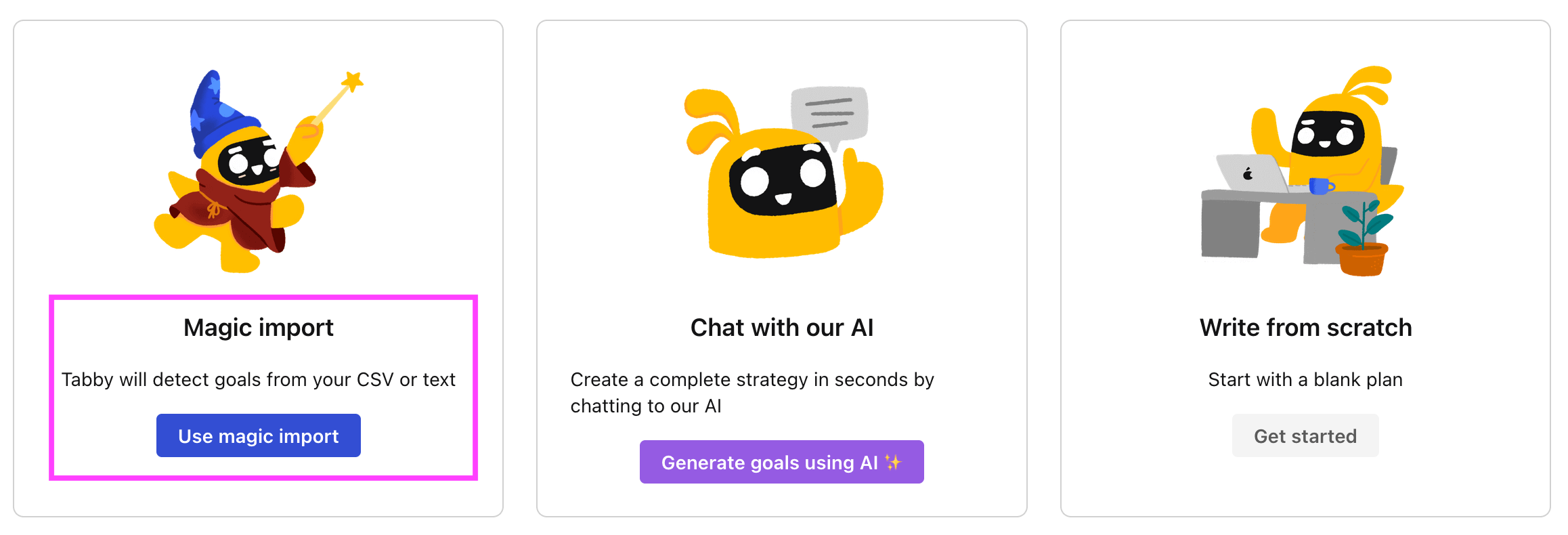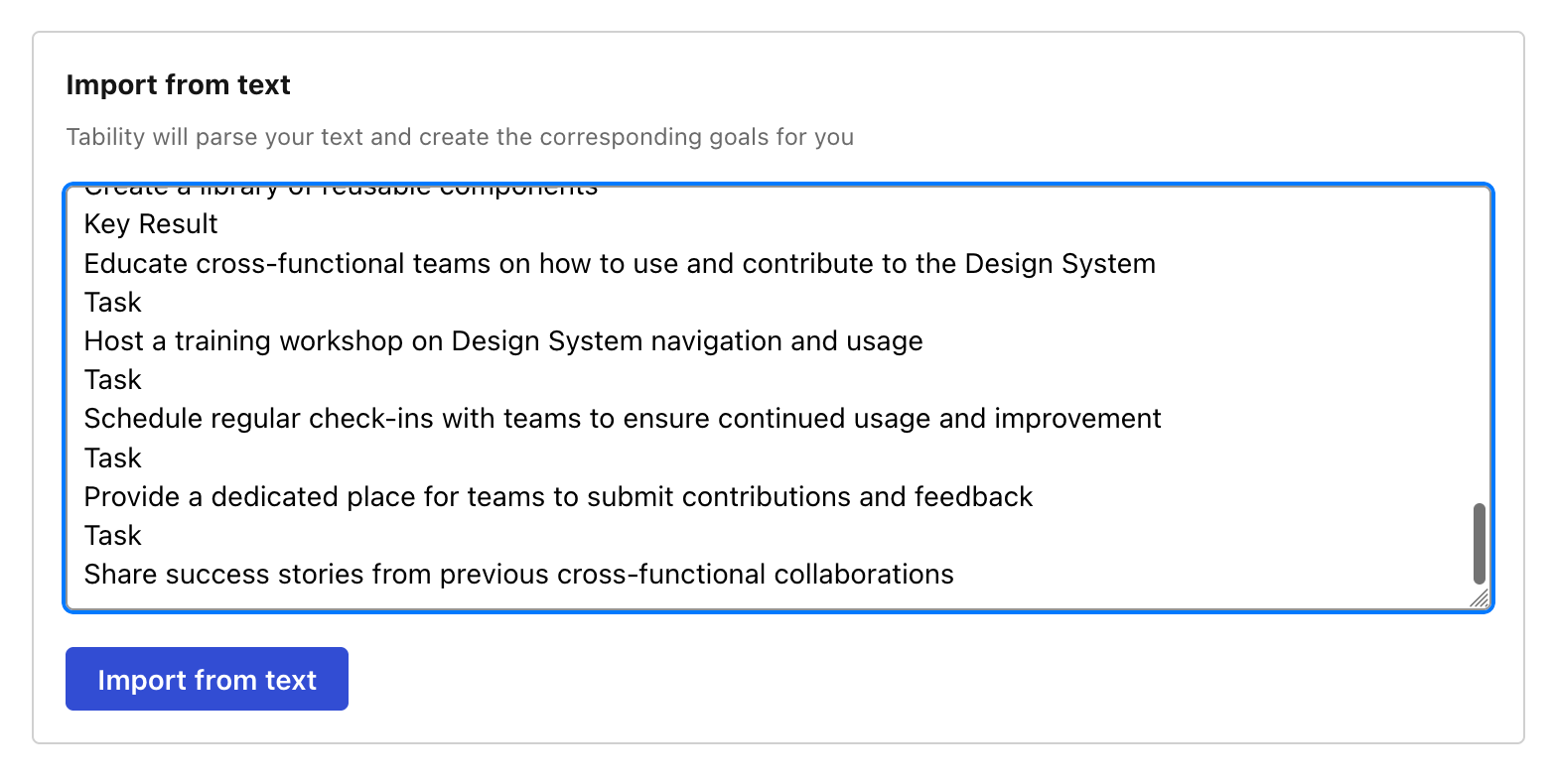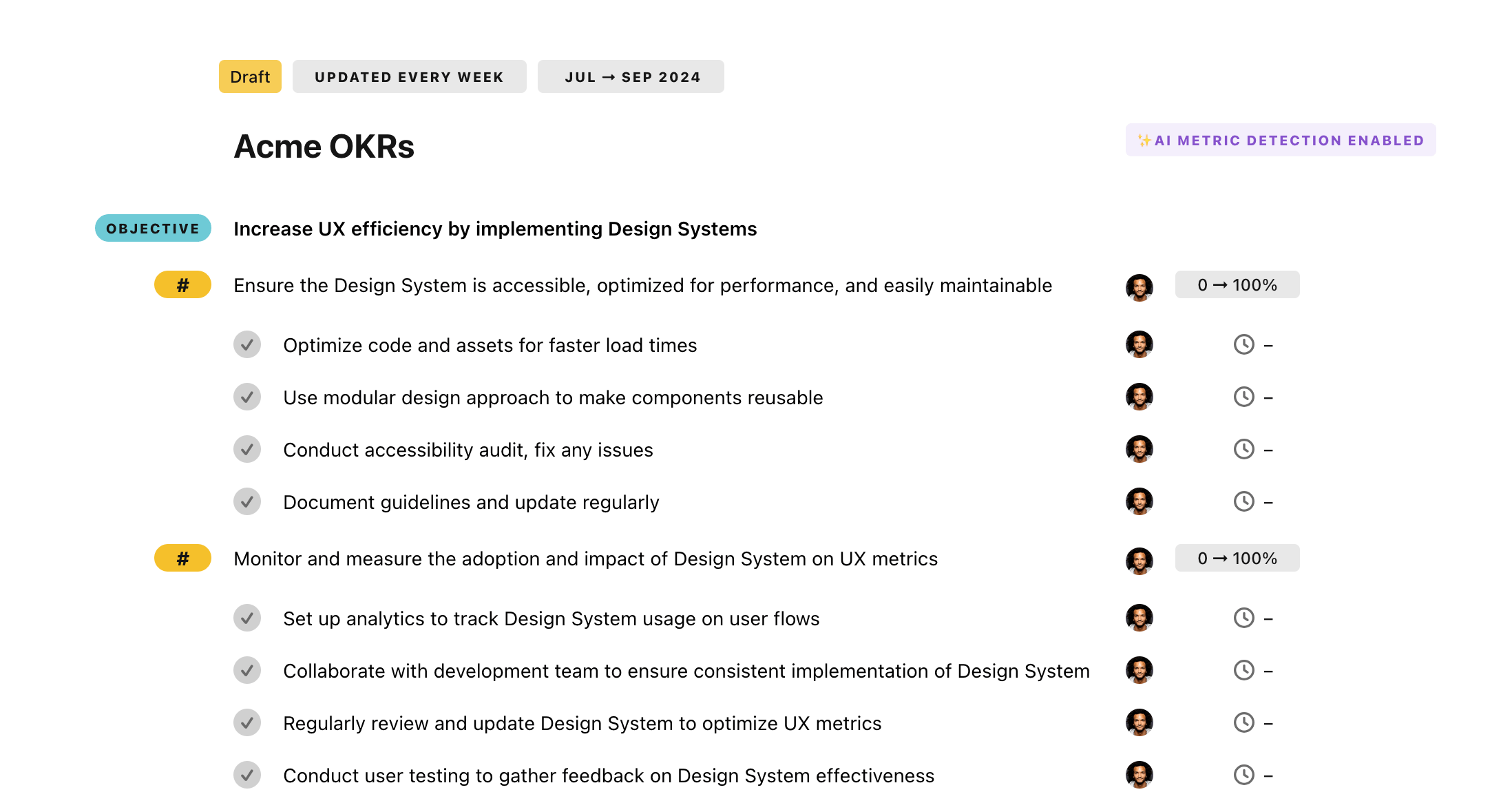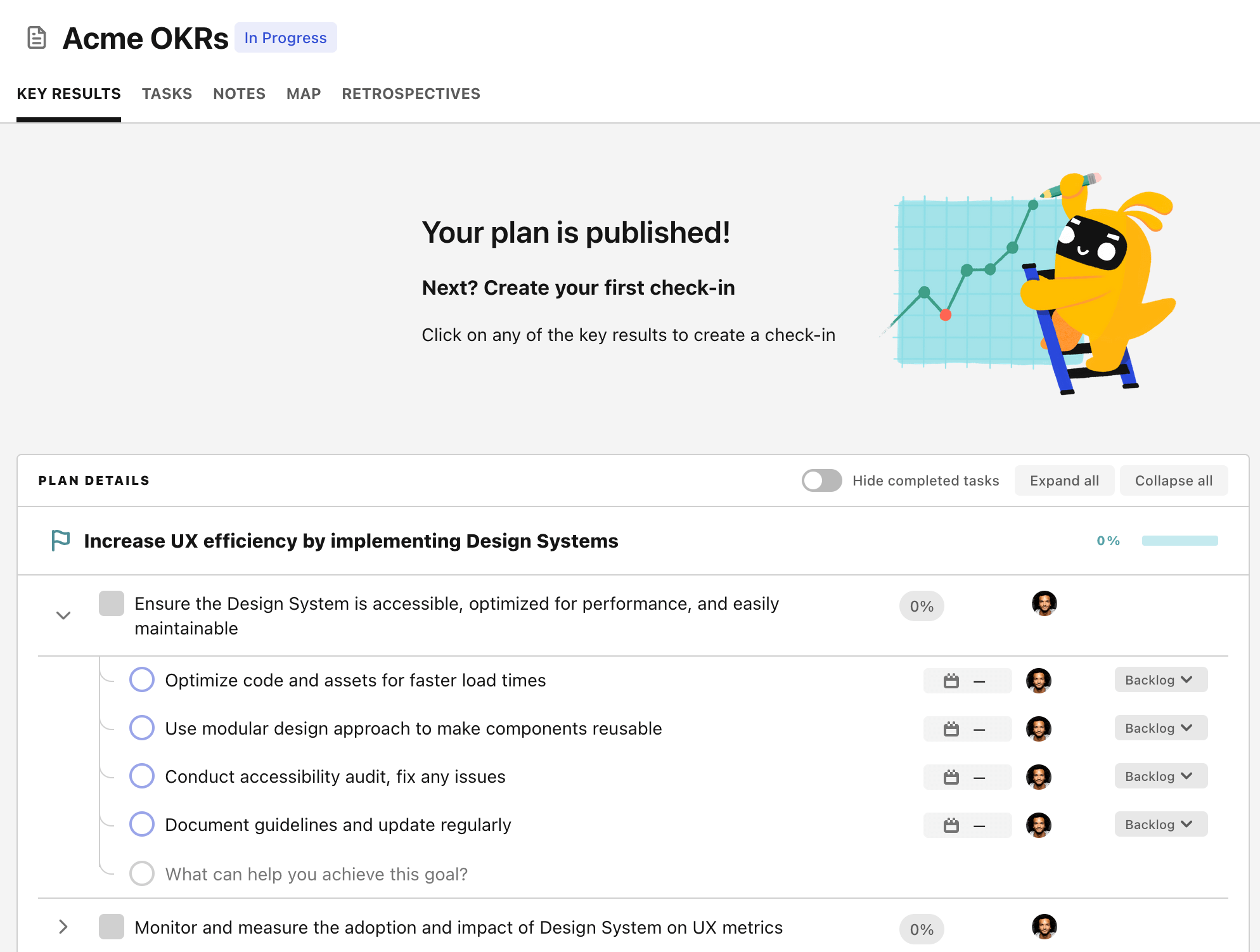OKR template to elevate our restaurant's service quality
Your OKR template
Furthermore, customer feedback on service quality is also taken into account, with an objective to attain 95% positive feedback. This involves setting up a post-service follow-up process, implementing customer service training, and regular evaluation of service protocols to meet this objective.
Improving the staff's response time to customer inquiries by 20% is also targeted under the OKR. Implementing an efficient customer service training program, setting clear response time goals and norms, and integrating customer relationship management software are the key steps envisaged.
Altogether, this OKR targets to considerably enhance the service quality of a restaurant by focusing on staff training, customer feedback and response time to customer inquiries. This necessitates the development and implementation of several initiatives and programs.
ObjectiveElevate our restaurant's service quality
KRImplement a training program improving staff etiquette and efficiency by 30%
Develop a comprehensive etiquette and efficiency training program
Identify and enroll eligible staff in training
Monitor progress and provide feedback
KRAttain 95% positive customer feedback on service quality
Initiate a follow-up procedure after service delivery
Implement a comprehensive customer service training program
Regularly evaluate and improve service protocols
KRImprove staff response time to customer inquiries by 20%
Implement a well-structured training program for efficient customer service
Establish clear response time goals and guidelines
Integrate a customer relations management software
How to edit and track OKRs with Tability
You'll probably want to edit the examples in this post, and Tability is the perfect tool for it.
Tability is an AI-powered platform that helps teams set better goals, monitor execution, and get help to achieve their objectives faster.
With Tability you can:
- Use AI to draft a complete set of OKRs in seconds
- Connect your OKRs and team goals to your project
- Automate reporting with integrations and built-in dashboard
Instead of having to copy the content of the OKR examples in a doc or spreadsheet, you can use Tability’s magic importer to start using any of the examples in this page.
The import process can be done in seconds, allowing you to edit OKRs directly in a platform that knows how to manage and track goals.
Step 1. Sign up for a free Tability account
Go tohttps://tability.app/signup and create your account (it's free!)
Step 2. Create a plan
Follow the steps after your onboarding to create your first plan, you should get to a page that looks like the picture below.

Step 3. Use the magic importer
Click on Use magic import to open up the Magic Import modal.
Now, go back to the OKR examples, and click on Copy on the example that you’d like to use.

Paste the content in the text import section. Don’t worry about the formatting, Tability’s AI will be able to parse it!

Now, just click on Import from text and let the magic happen.

Once your example is in the plan editor, you will be able to:
- Edit the objectives, key results, and tasks
- Click on the target 0 → 100% to set better target
- Use the tips and the AI to refine your goals
Step 4. Publish your plan
Once you’re done editing, you can publish your plan to switch to the goal-tracking mode.

From there you will have access to all the features that will help you and your team save hours with OKR reporting.
- 10+ built-in dashboards to visualise progress on your goals
- Weekly reminders, data connectors, and smart notifications
- 9 views to map OKRs to strategic projects
- Strategy map to align teams at scale